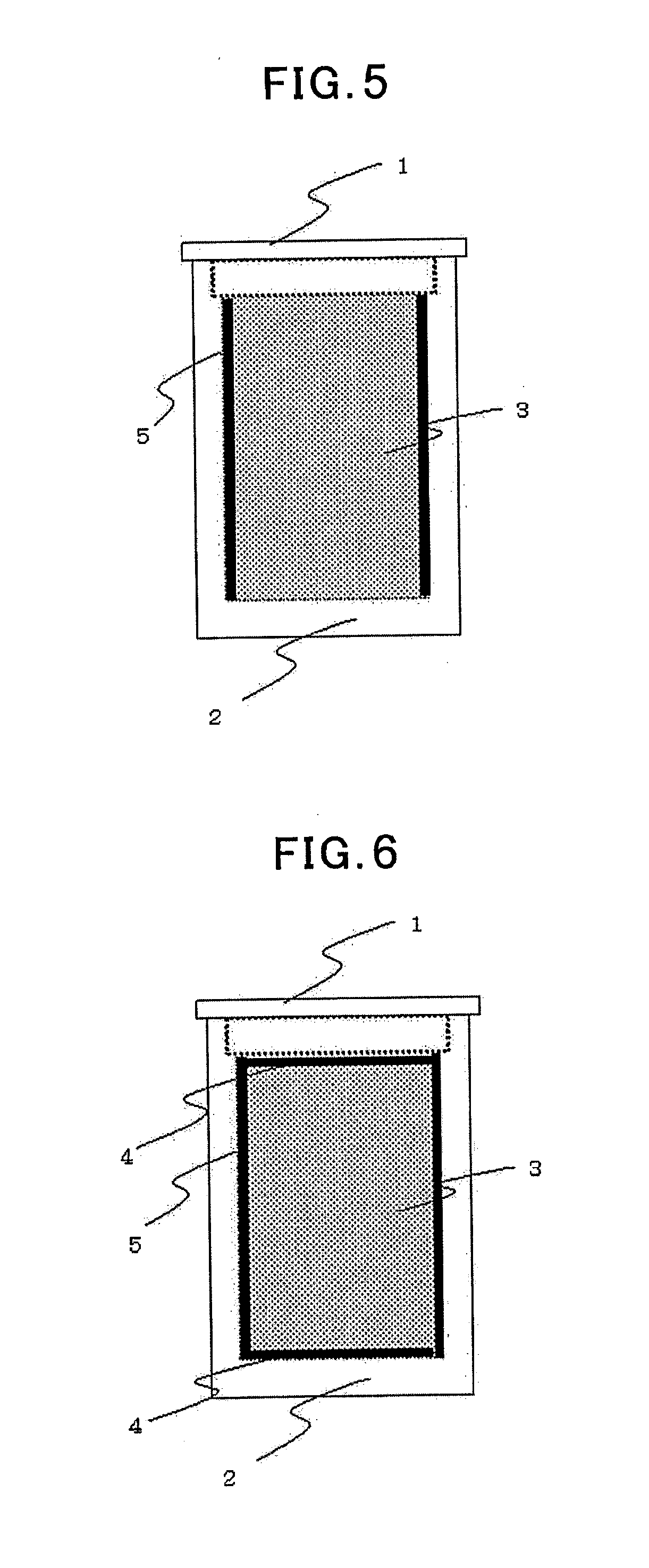Method for producing multilayer graphene-coated substrate
a graphene-coated substrate and multi-layer technology, applied in the direction of coatings, insulation conductors/cables, transportation and packaging, etc., can solve the problems of inability to form graphite alone into a sheet, health hazards, and difficulty in forming graphite alone, etc., to achieve efficient heat-releasing sheet, conductive film, and transparent conductive film.
- Summary
- Abstract
- Description
- Claims
- Application Information
AI Technical Summary
Benefits of technology
Problems solved by technology
Method used
Image
Examples
example 1
[0178]The cluster of multi-layer graphenes which had a size of from several millimeters to several tens millimeters and could be held by hand was selected from those produced in Production Example 1. An SEM of the surface of the cluster of graphenes is shown in FIG. 15. It is seen that the obtained cluster has a structure composed of many aggregated multi-layer graphenes in the form of flower leaf having a size of several microns and an extremely thin thickness.
[0179]A 300 μm thick PET resin film was cut into a shape of 30 mm×30 mm, and the surface thereof was wiped with a swab impregnated with ethyl alcohol for cleaning and degreasing treatment to prepare a substrate.
[0180]The surface of the substrate was rubbed with the cluster of multi-layer graphenes held on a hand to cause a friction force at an interface between the substrate and the cluster of multi-layer graphenes, thereby forming a multi-layer graphene layer on the surface of the substrate. In the rubbing of the surface of ...
example 2
[0184]Clusters of multi-layer graphenes of Production Examples 2-1 to 2-6, and an artificial graphite material A (IGS895 available from Nippon Techno-Carbon Co., Ltd.) and an artificial graphite material B (MGY-72 available from TOHO CARBON CO., LTD.) prepared in Production Example 2 were prepared as graphite materials. A true density, an apparent density, a bulk density and a total pore ratio thereof are shown in Table 2-1.
[0185]Substrates coated with multi-layer graphenes were produced in the same manner as in Example 1 except that these graphite materials were used. In any of productions, the rubbing of the graphite material was carried out five times.
[0186]With respect to each of the graphite materials, whether or not a coated layer of multi-layer graphenes had been formed on the surface of the substrate was observed using an optical microscope. A light transmissivity and a surface resistance of the obtained substrate were measured. The results are shown in Tables 2-2 and 2-3.
[0...
example 3
[0188]A 300 μm thick PET resin film, a 500 μm thick acrylic resin film, a 200 μm thick polystyrene resin film, a 1 mm thick polycarbonate resin film, a 50 μm thick polypropylene resin film, a 100 μm thick polyethylene resin film, a 50 μm thick polyvinyl chloride resin film, a 500 μm thick Teflon (trade mark) resin film and a 500 μm thick glass sheet were cut into a shape of 30 mm×30 mm, respectively, and the surfaces thereof were wiped with a swab impregnated with ethyl alcohol for cleaning and degreasing treatment to prepare substrates.
[0189]The surfaces of these substrates was treated in the same manner as in Example 1 using the cluster of multi-layer graphenes obtained in Production Example 1 to ascertain whether a coated layer of the multi-layer graphenes was formed on the substrate. Number of rubbing cycles of the surface of the substrate with the cluster of multi-layer graphenes was five times.
[0190]The surfaces of the obtained substrates were observed with an optical microsco...
PUM
 Login to View More
Login to View More Abstract
Description
Claims
Application Information
 Login to View More
Login to View More - R&D
- Intellectual Property
- Life Sciences
- Materials
- Tech Scout
- Unparalleled Data Quality
- Higher Quality Content
- 60% Fewer Hallucinations
Browse by: Latest US Patents, China's latest patents, Technical Efficacy Thesaurus, Application Domain, Technology Topic, Popular Technical Reports.
© 2025 PatSnap. All rights reserved.Legal|Privacy policy|Modern Slavery Act Transparency Statement|Sitemap|About US| Contact US: help@patsnap.com



